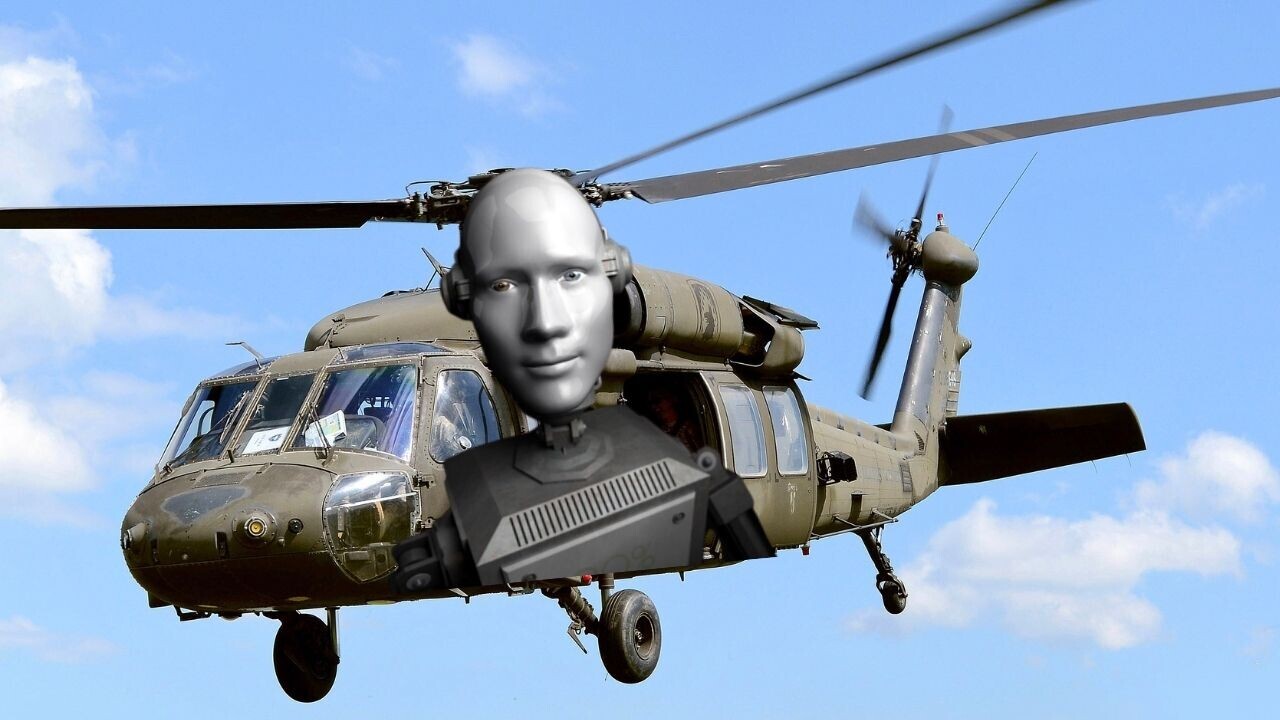Checking Out the Thrills and Innovations of the Blackhawk Helicopter
The Blackhawk helicopter stands as a testimony to military air travel's advancement, merging technological innovations with practical applications. What exists in advance for this renowned airplane, and just how will arising modern technologies shape its future in army operations?
Background of the Blackhawk Helicopter
Given that its inception in the 1960s, the Blackhawk helicopter has actually played a crucial role in contemporary army aviation. Established by Sikorsky Airplane, the UH-60 Blackhawk was made to fulfill the U.S. Army's requirement for a functional energy helicopter efficient in executing a variety of missions, including army transport, clinical evacuation, and cargo airlift. The layout was an action to the constraints of earlier helicopters, specifically in terms of survivability, maneuverability, and speed.
The Blackhawk made its initial trip in 1974 and quickly entered service in 1979. Its introduction marked a substantial innovation in helicopter technology, featuring a two-rotor system that improved efficiency and security. The aircraft's tough building and progressed avionics permitted it to run properly in varied settings and problems.
Throughout the years, the Blackhawk has been continuously updated, incorporating lessons picked up from different battle scenarios. Its implementation in problems such as the Gulf Battle, Somalia, and the War on Fear additional strengthened its track record as a crucial property. The Blackhawk's tradition is characterized by its versatility and durability, making it a cornerstone of military air travel for years.
Secret Features and Specifications
The Blackhawk helicopter is identified by its durable design and progressed technological features, which jointly boost its functional abilities. Designed largely for utility missions, the Blackhawk flaunts a maximum takeoff weight of about 22,000 extra pounds, enabling it to carry significant hauls while preserving agility.
Outfitted with 2 General Electric T700-GE-701C engines, the Blackhawk achieves a maximum speed of around 183 knots and a series of 368 maritime miles - Blackhawk Helicopter. Its cutting edge blades system features a four-blade main blades and a four-blade tail rotor, making sure stability and maneuverability in numerous flying conditions
The helicopter's cabin can suit up to 11 soldiers or various freight configurations, showcasing convenience in mission accounts. Additionally, the Blackhawk is created with advanced avionics, consisting of electronic flight controls and a thorough cabin display, enhancing pilot situational understanding.
For enhanced survivability, the Blackhawk integrates ballistic armor and self-sealing fuel storage tanks. Its capacity to operate in diverse atmospheres, from deserts to icy surfaces, even more strengthens its reputation as a trusted system for military and humanitarian operations alike. The Blackhawk's mix of flexibility, durability, and power makes it a keystone of modern-day aerial capacities.
Advancements in Technology
Innovations in innovation have actually substantially improved the abilities of the Blackhawk helicopter, guaranteeing it remains at the forefront of army aeronautics. Among one of the most notable advancements is the integration of innovative avionics systems, which give boosted situational awareness via real-time information processing and display. This innovation permits pilots to browse complex settings much more effectively, boosting goal success rates.

Furthermore, the intro of digital fly-by-wire systems has actually revolutionized the control devices of the Blackhawk, offering smoother handling and raised responsiveness. Collectively, these technical developments make certain that the Blackhawk helicopter stays an essential possession in modern-day military procedures.
Roles in Military Procedures
With advanced modern technology enhancing its abilities, the Blackhawk helicopter plays a complex role in armed forces procedures. Mostly, it is used for troop transportation, making it possible for fast deployment and extraction of employees in various combat circumstances. Its large cabin can accommodate up to 11 troops, making it an essential asset for large goals and special procedures.
In Addition, the Blackhawk works as a medevac platform, furnished to move damaged soldiers rapidly and effectively from the combat zone to clinical facilities - Blackhawk Helicopter. Its flexibility expands to logistical support, where it carries materials and devices important for sustaining military operations in remote areas

The helicopter is additionally instrumental in reconnaissance objectives, supplying aerial monitoring and intelligence-gathering capabilities. Its capacity to operate in diverse environments-- varying from urban settings to extreme surfaces-- additional strengthens its significance on the field of battle.
In Addition, the Blackhawk can be furnished with sophisticated weapons, allowing it to engage in battle and offer close air support. This flexibility highlights the helicopter's essential role in modern-day army methods, making it an important component of armed pressures worldwide.
Future Advancements and Innovations
Advancements a fantastic read in modern technology promise to usher in a brand-new period for the Blackhawk helicopter, enhancing its capacities and operational efficiency. Future growths Check This Out for the Blackhawk may consist of improvements in avionics, such as advanced flight control systems and boosted situational recognition devices powered by synthetic knowledge.
Furthermore, the integration of unmanned systems is on the perspective, potentially permitting manned-unmanned teaming procedures that can expand mission accounts and minimize threat to personnel. The Blackhawk's design is likewise anticipated to incorporate lighter and more powerful materials, improving fuel effectiveness and total efficiency.

Conclusion
In verdict, the Blackhawk helicopter represents a considerable success in military aeronautics, characterized by its flexibility and progressed technological functions. Its historic development mirrors a continuous action to functional needs, boosting abilities in numerous roles such as troop transport and medevac procedures. Recurring technologies, consisting of the integration of man-made knowledge and hybrid-electric propulsion, assure to additional strengthen the Blackhawk's efficiency and significance in future army involvements, ensuring its status as an essential possession Bonuses on the combat zone.

With advanced innovation enhancing its abilities, the Blackhawk helicopter plays a diverse duty in army operations. (Blackhawk Helicopter)